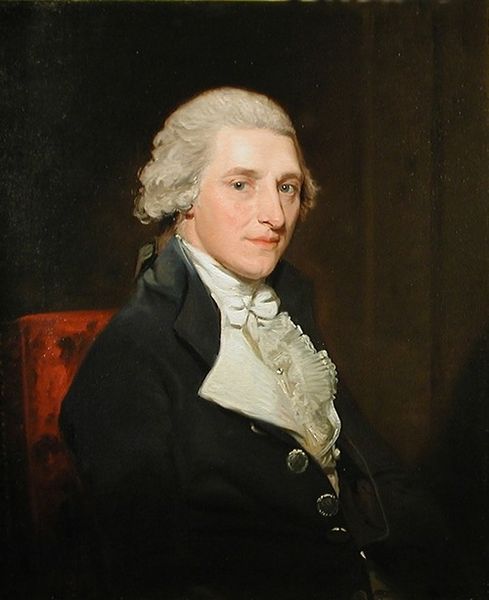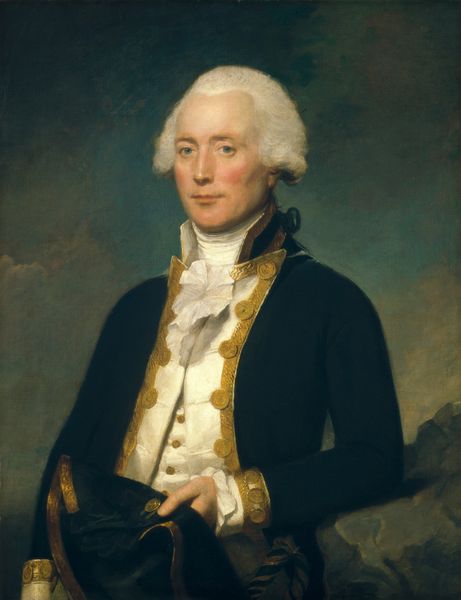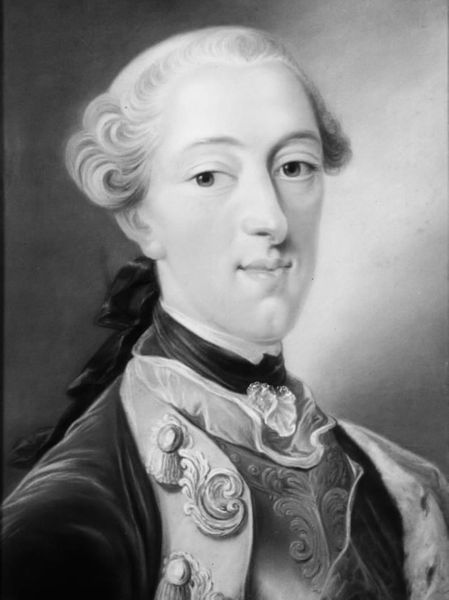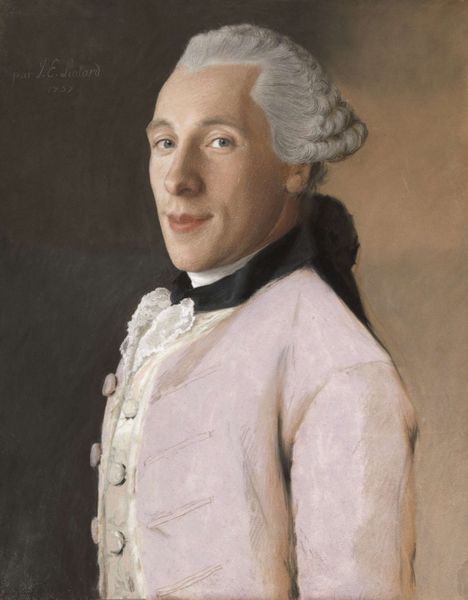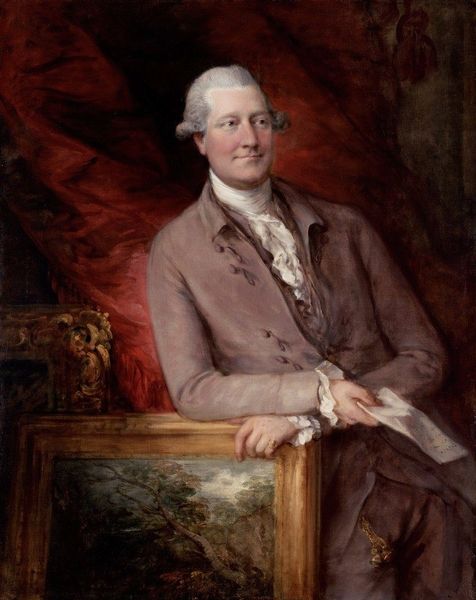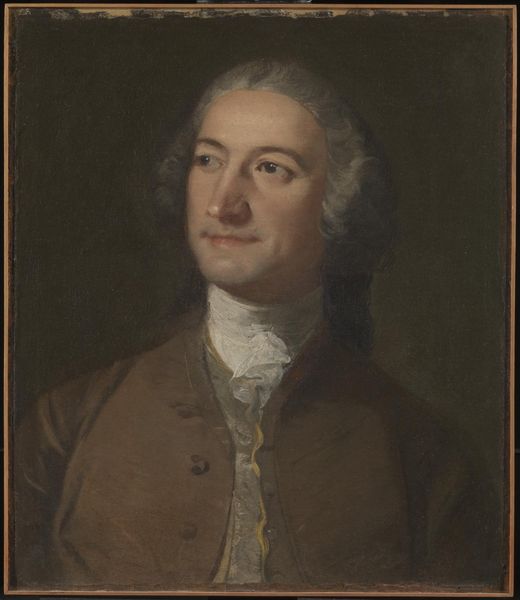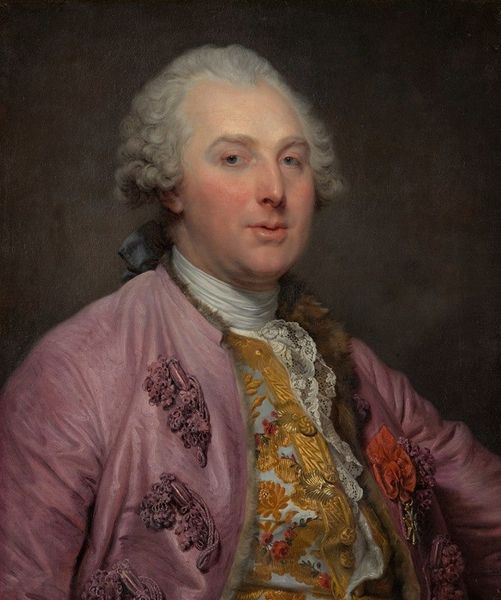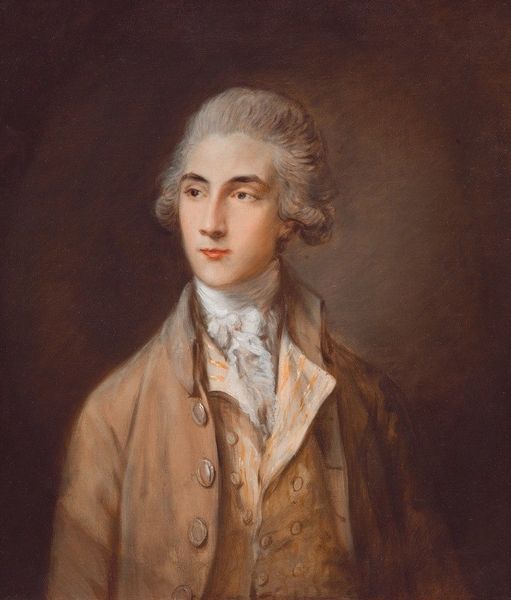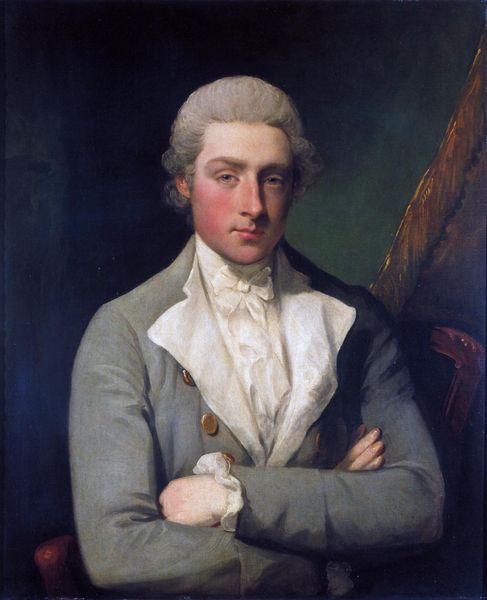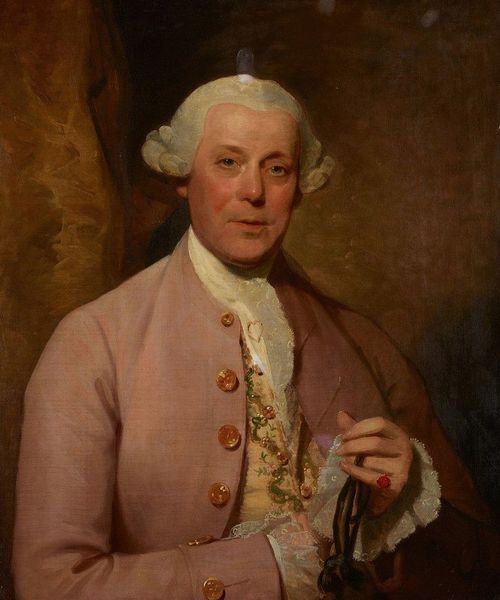
#
portrait image
#
portrait reference
#
portrait head and shoulder
#
animal portrait
#
animal drawing portrait
#
portrait drawing
#
facial portrait
#
portrait art
#
fine art portrait
#
digital portrait
Copyright: Public domain
Editor: This is Jean-Étienne Liotard's "Jean-Louis Buisson-Boissier," created in 1766. It's a pastel portrait with such a serene, almost melancholic mood. What do you see in this piece that might go beyond the immediate aesthetic? Curator: Beyond the pale skin and powdered wig, which speak volumes about the subject’s privileged status in 18th-century society, I see a work deeply embedded in the constructs of power and gender. Look at the way his gaze avoids direct eye contact, suggesting perhaps a carefully constructed detachment. What does that detachment communicate about masculinity and social expectations during that time? Editor: It seems like he's aware of being watched or judged. Does the medium, pastel, play a role in our interpretation? Curator: Absolutely. Pastel, with its soft, delicate texture, lends itself to idealization. Think about the social roles imposed on the aristocracy and how that might intersect with this portrait's soft execution. In what ways might the portrait, seemingly innocuous, uphold specific societal norms around class and representation? Editor: I never really considered that, the texture as another layer of the message itself. It is also an indirect endorsement of such privileges... Curator: Precisely! The elegance, the softness, they are not just aesthetic choices but tools to reinforce a particular vision of aristocracy. Does it challenge or merely reflect the gender norms for men during that period? Editor: I think it’s mostly reflecting. Though, maybe the very slight hint of femininity in the lilac jacket might propose a silent transgression? But overall, the figure appears to embody rather conservative expectations of masculinity for that period. Curator: Exactly. Considering our own social and political contexts, we can better understand the messages art sends—both overt and subliminal—about social and class identities. Thank you, this dialogue gave me an excellent opportunity to rethink those issues and perspectives about male portraits and masculinity expectations. Editor: This was illuminating! I now realize it’s so important to explore the art through the critical lens of history.
Comments
No comments
Be the first to comment and join the conversation on the ultimate creative platform.

